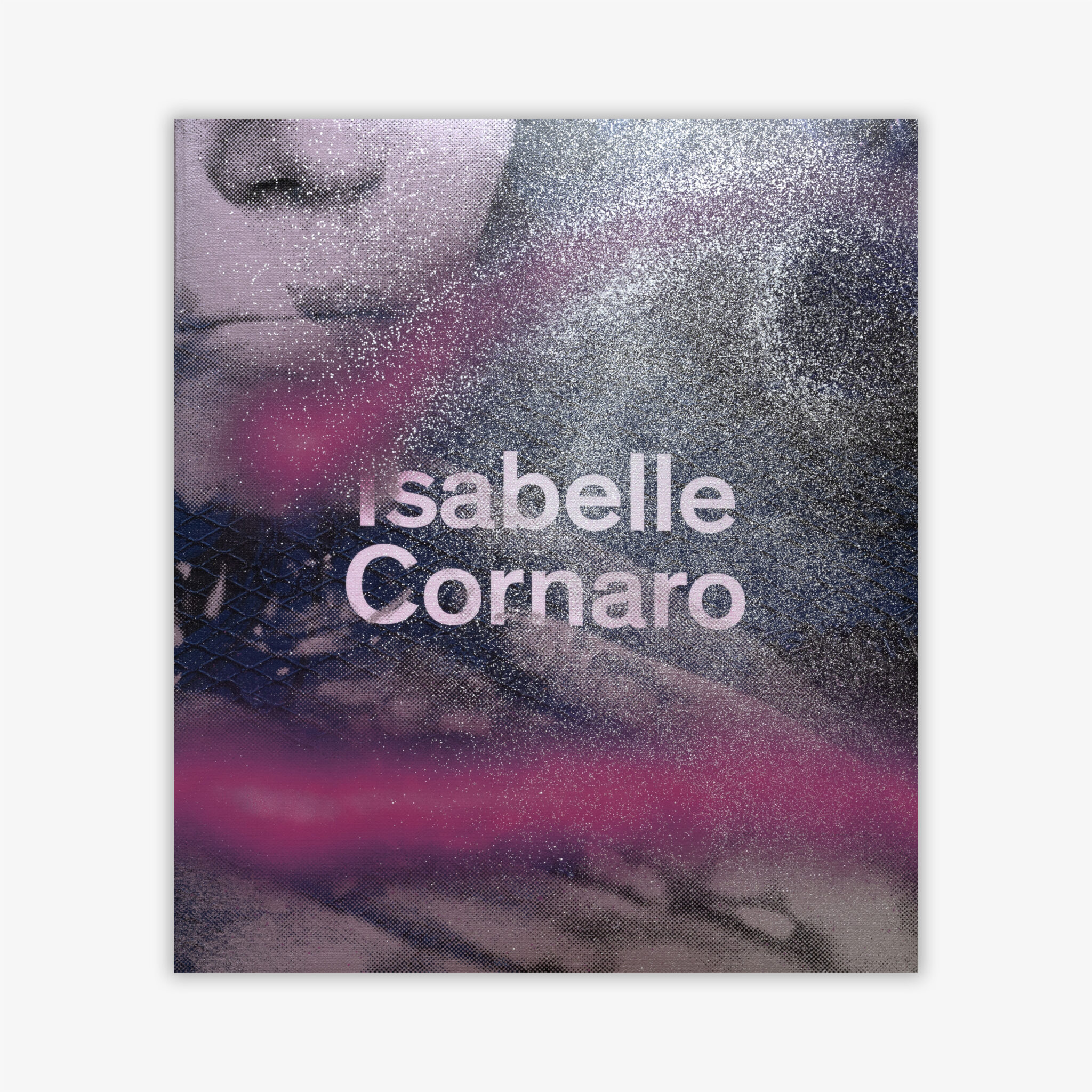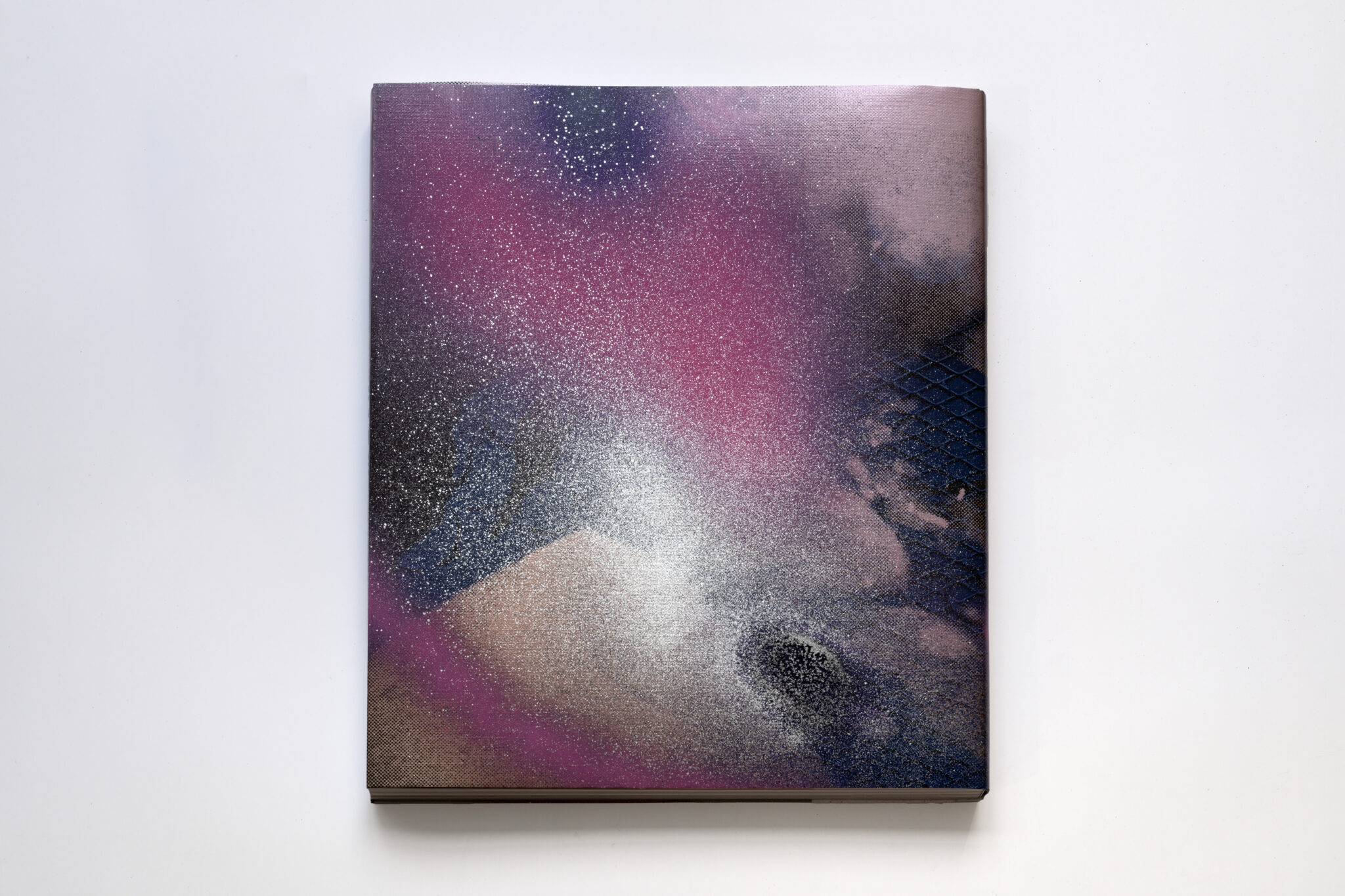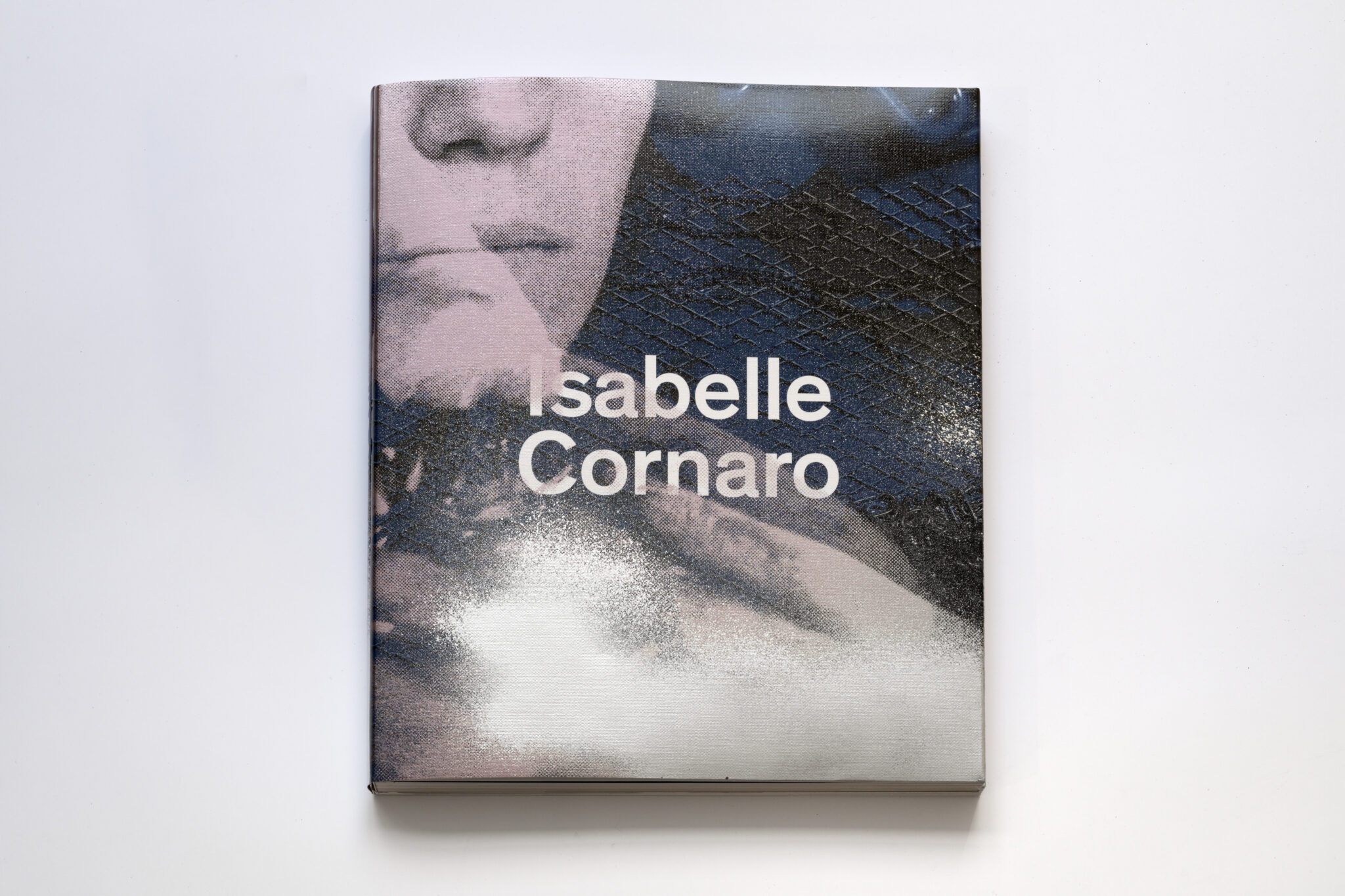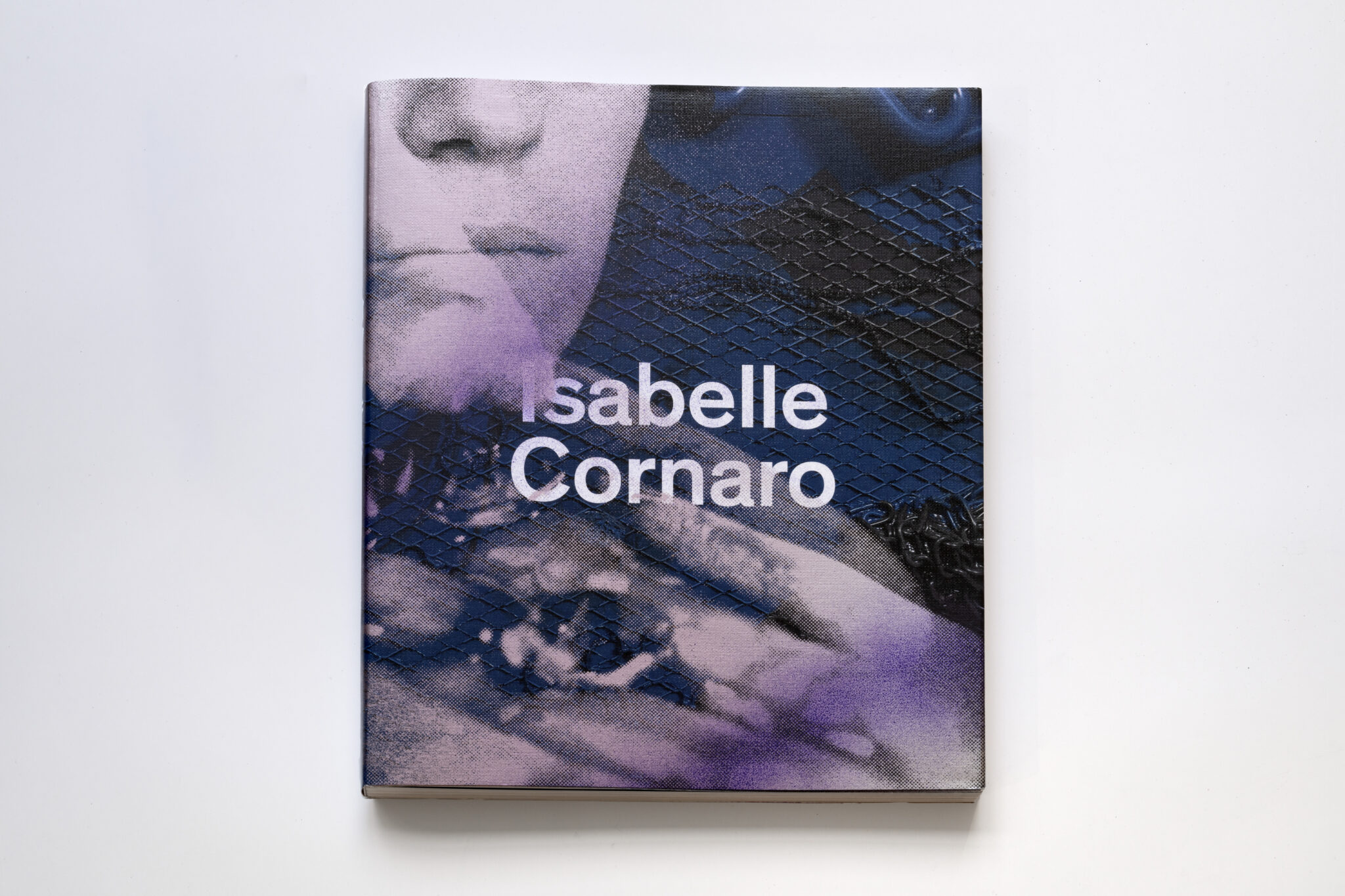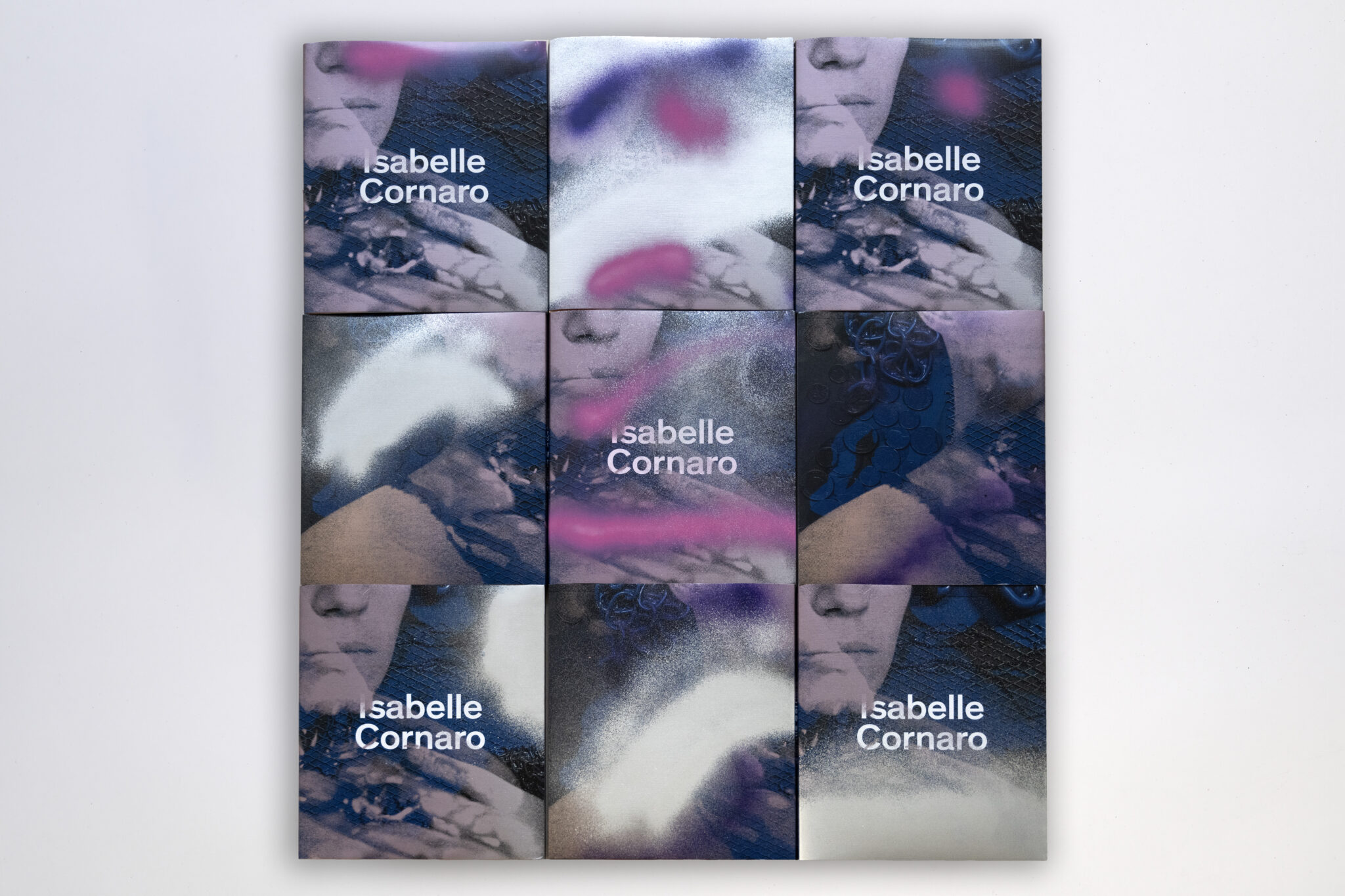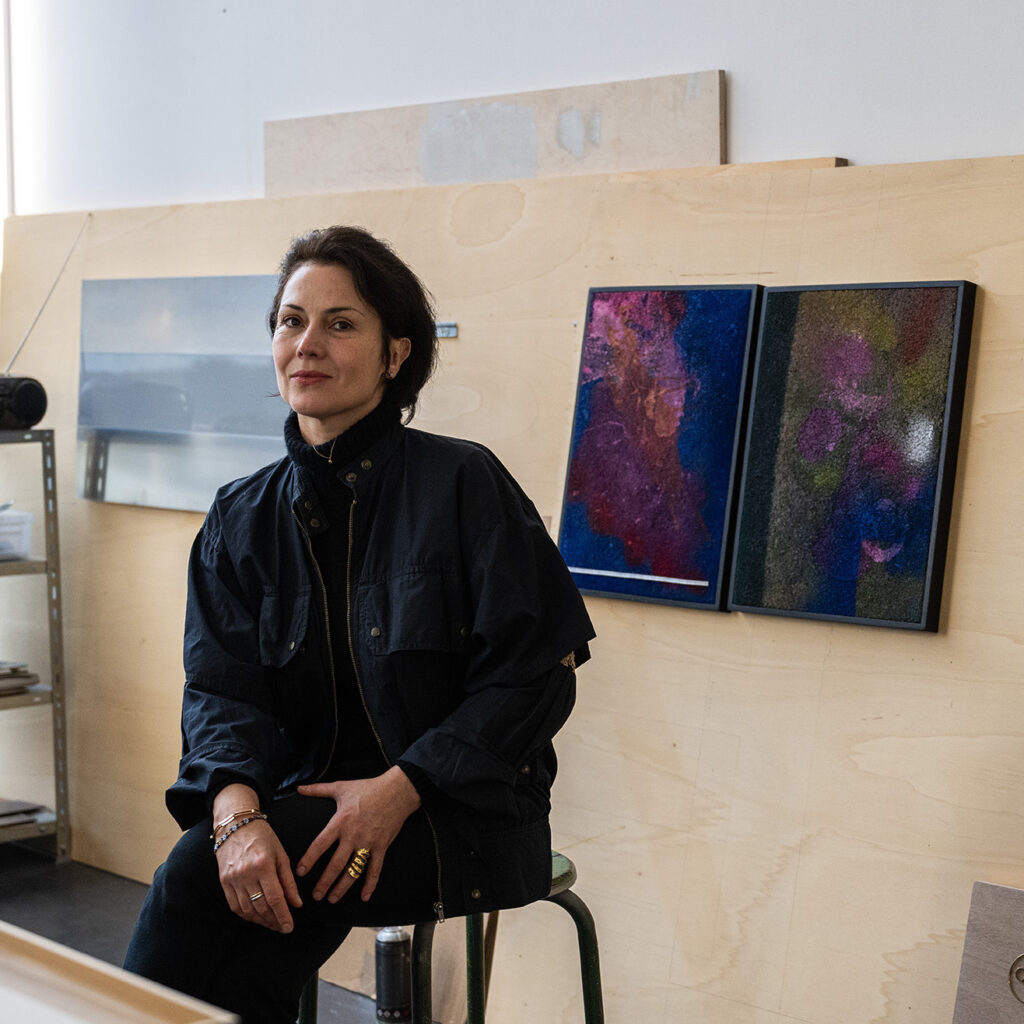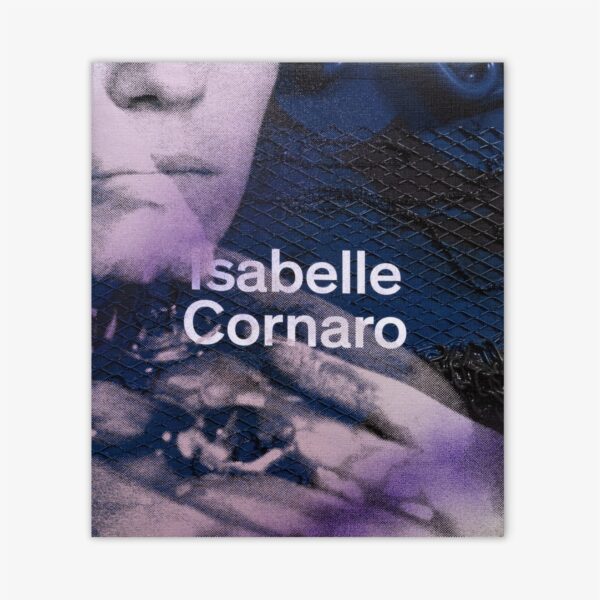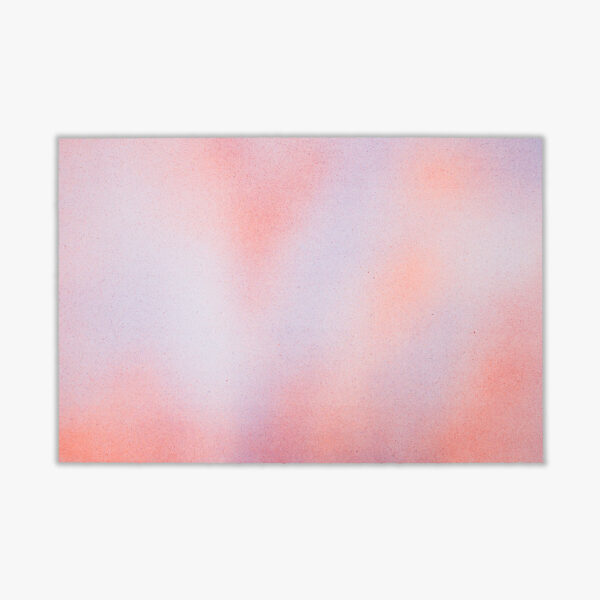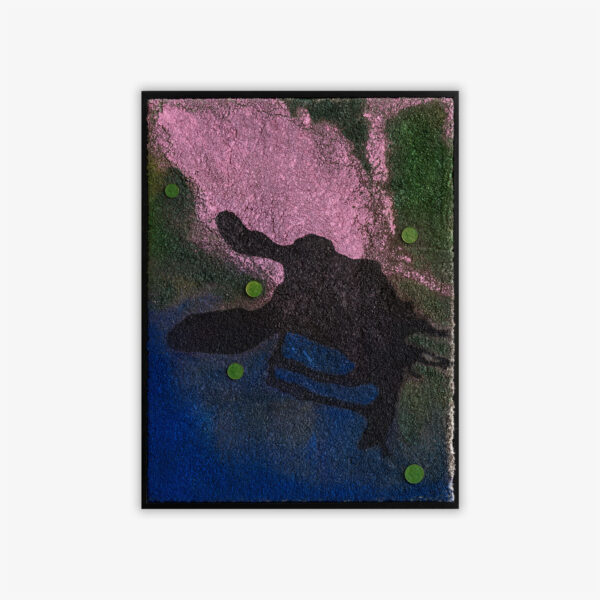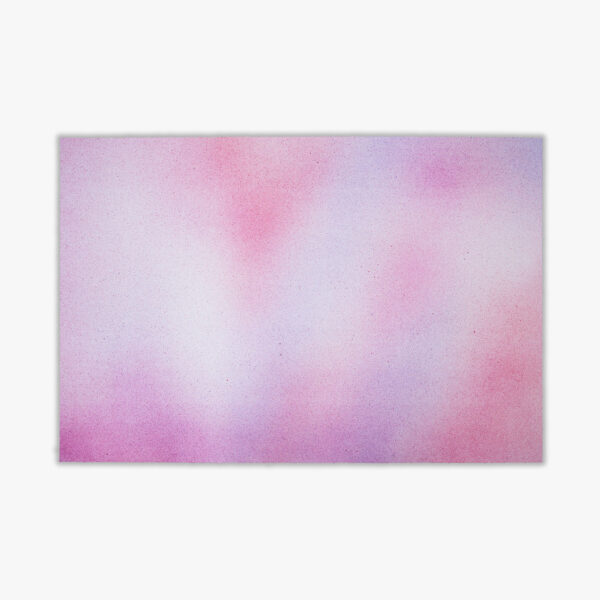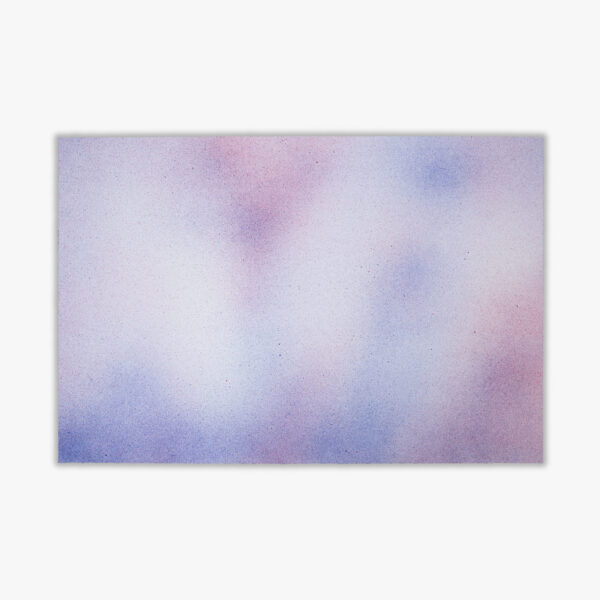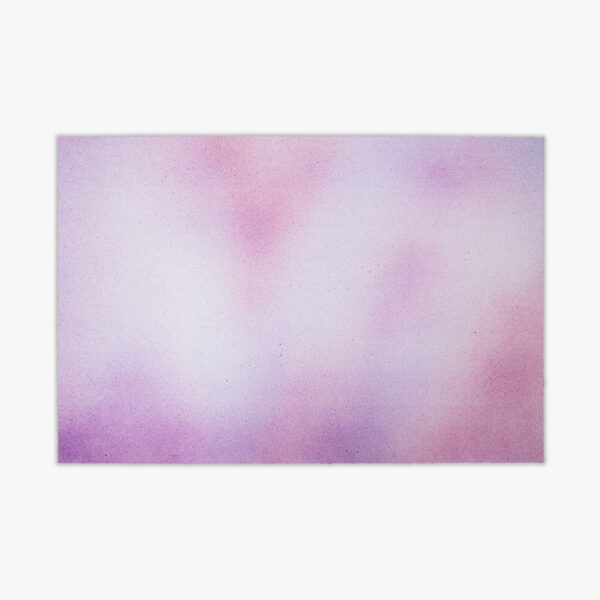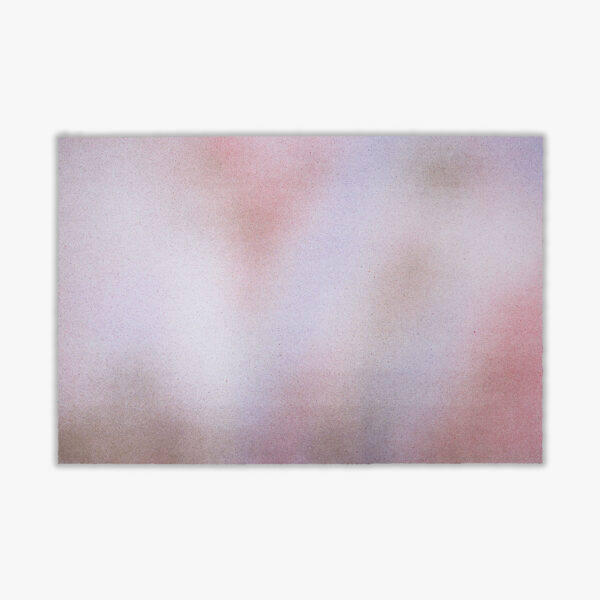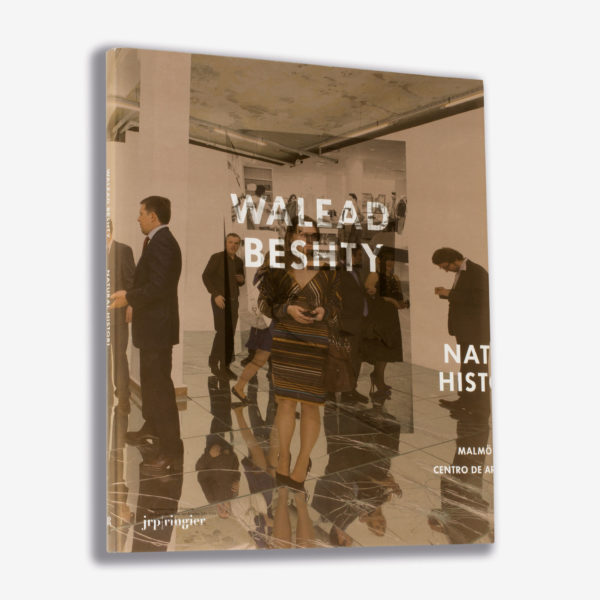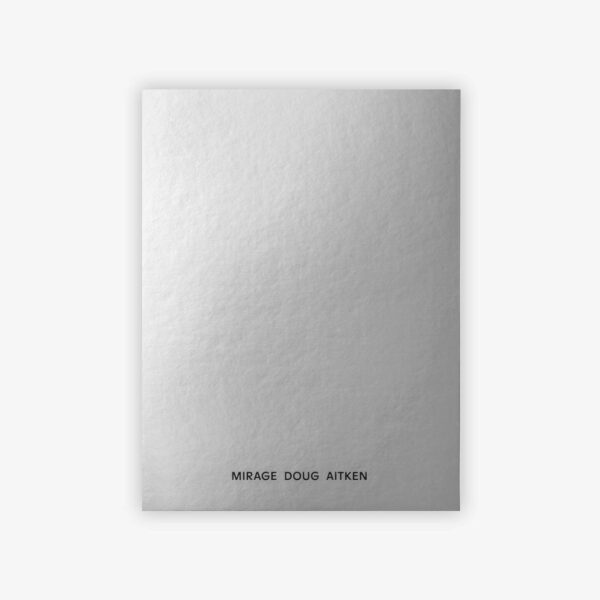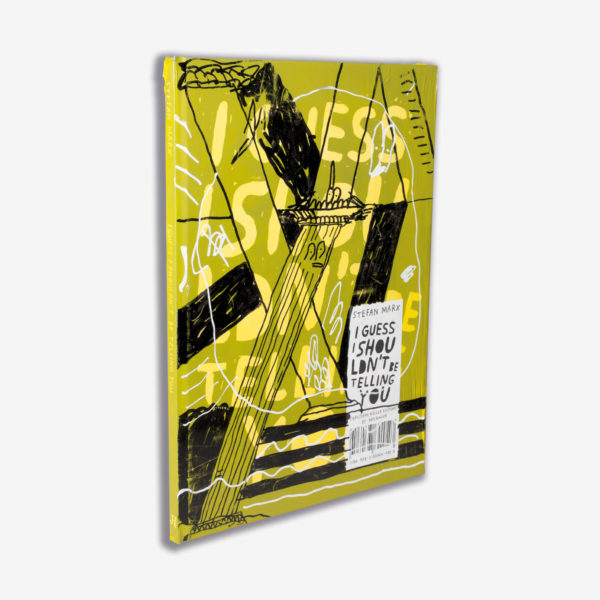To coincide with the release of her reference monograph published by JRP|Editions, Isabelle Cornaro (*1974, lives in Paris) has spray-painted a limited number of her publication’s covers, offering the opportunity to acquire a unique limited edition.
The cover being already formed by the superposition of two emblematic images of her work, this spray-painted gesture adds a new layer and refers to one of Cornaro’s characteristic way of working in her films, paintings, and sculptures.
Active since the beginning of the 2000s, Isabelle Cornaro investigates the relationship between objects—especially decorative objects—value, and art, through the issues of representation, perceptual experience, and reproduction. She is also exploring how to translate forms and languages, for example an old master painting into a 3D installation, a film into a graphic score, or the vocabulary of Minimalism into a more emotional language. She mines ambiguity by setting up a tension between the analytical, symbolic, lyrical, and anecdotal, addressing how our way of looking constructs the—colonial, bourgeois, modern—world and its uses. She works with various media such as installation, painting, sculpture, video, wall painting, and drawing.
Informed by her studies of Renaissance and classical aesthetics, she has explored how French painter Nicolas Poussin gave form to constructed worlds in his detailed depictions of mythological scenes and to how baroque art empowered objects; she has often favored the genre of still life, be it carefully built or chaotically (dis)organized. In her two- and three-dimensional pieces Cornaro is always creating a stage for the objects to be seen and the viewer to position themselves in. Perspectives and the ways we look at things play a crucial role in her work.
Offering a first occasion to grasp the cogency of a manifold practice, this reference monograph includes essays by American art critic Tim Griffin and art historian and Musée Picasso Paris President Cécile Debray, interviews with curator Fabrice Stroun and editor Clément Dirié, as well as comprehensive descriptive texts by art critic Benjamin Thorel.

